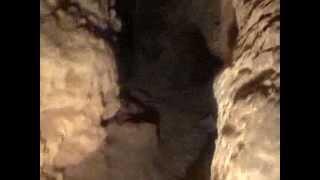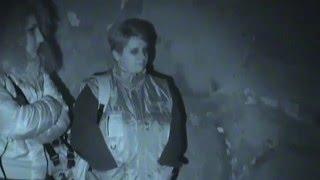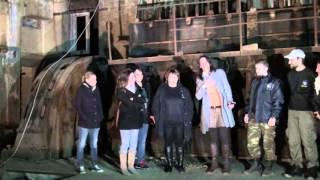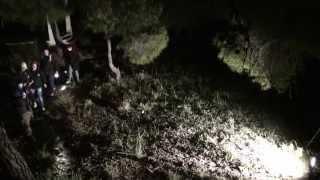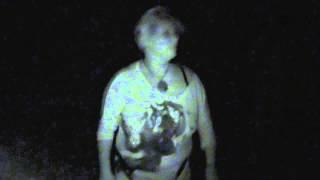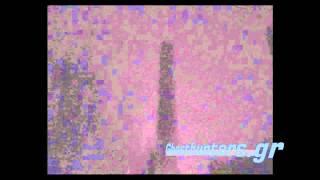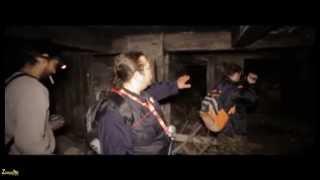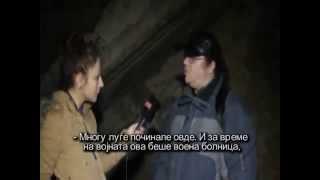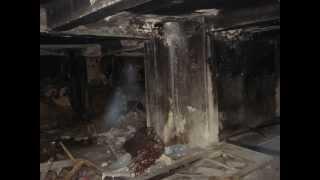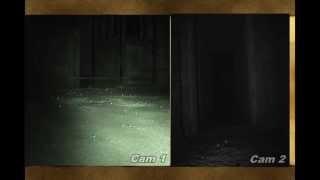Larry The Mammoths Skull Is Confusing Paleontologists.
National Park Service biologist Peter Larramendy first noticed a mammoth tusk poking out of a river bank in September 2014, while conducting a stream study. Now a team of paleontologists has excavated the skull of "Larry" the mammoth – named in homage to its discoverer and the late paleontologist Larry Agenbroad – and it turns out he is a very confusing specimen.
The well-preserved skull is thought to date from a time when humans were also present on the island. Not only that, it’s peculiar size and tusks hint that it could be a transitional fossil between two species.
It was found along a river bank on Santa Rosa Island within the Channel Islands National Park, just off the Southern California coast. While it is not large enough to be classified as a Columbian mammoth, it also isn’t small enough to be classified as a pygmy mammoth.
Columbian mammoths (Mammuthus columbi), which average about 4.2 meters (14 feet) tall, migrated to these islands during the past two ice ages when sea levels were lower. They eventually evolved on the islands to become much smaller and became their own 1.8-meter (6 feet) tall pygmy species, known as Mammuthus exilis. Dan Muhs, a geologist at the US Geological Survey, estimates in a statement that this transition could have taken as little as a few thousand years.
However, dimensions of this newly-found skull appear to slot directly in between the size of these species. Could it be a young Columbian mammoth? Or even an evolutionary “missing link” between these two mammoths?The tusks and teeth usually provide a pretty good idea of their age, but in this instance, things are a bit trickier. The right tusk appears to coil around, which is a characteristic typical of an older mammal. The left is much shorter, sloped, and more typical of a juvenile. The researchers hope to carry out measurements on the specimen's teeth to get a better idea of its age, and subsequently answer what species it is.
In the long run, the plan is to ship the mammoth back to the mainland, where it will be will end up at the Santa Barbara Museum of Natural History. During its stay there, it will be preserved, studied, and eventually put on public display.
"This mammoth find is extremely rare and of high scientific importance. It appears to have been on the Channel Islands at the nearly same time as humans," onsite paleontologist Justin Wilkins said in the statement. "I have seen a lot of mammoth skulls and this is one of the best preserved I have ever seen."
Subscribe right now!!!https://www.youtube.com/channel/UCmOS0JgIOA0sq6xgoY21H0g?view_as=subscriber
Подпишись на канал!!!https://www.youtube.com/channel/UCmOS0JgIOA0sq6xgoY21H0g?view_as=subscriber
National Park Service biologist Peter Larramendy first noticed a mammoth tusk poking out of a river bank in September 2014, while conducting a stream study. Now a team of paleontologists has excavated the skull of "Larry" the mammoth – named in homage to its discoverer and the late paleontologist Larry Agenbroad – and it turns out he is a very confusing specimen.
The well-preserved skull is thought to date from a time when humans were also present on the island. Not only that, it’s peculiar size and tusks hint that it could be a transitional fossil between two species.
It was found along a river bank on Santa Rosa Island within the Channel Islands National Park, just off the Southern California coast. While it is not large enough to be classified as a Columbian mammoth, it also isn’t small enough to be classified as a pygmy mammoth.
Columbian mammoths (Mammuthus columbi), which average about 4.2 meters (14 feet) tall, migrated to these islands during the past two ice ages when sea levels were lower. They eventually evolved on the islands to become much smaller and became their own 1.8-meter (6 feet) tall pygmy species, known as Mammuthus exilis. Dan Muhs, a geologist at the US Geological Survey, estimates in a statement that this transition could have taken as little as a few thousand years.
However, dimensions of this newly-found skull appear to slot directly in between the size of these species. Could it be a young Columbian mammoth? Or even an evolutionary “missing link” between these two mammoths?The tusks and teeth usually provide a pretty good idea of their age, but in this instance, things are a bit trickier. The right tusk appears to coil around, which is a characteristic typical of an older mammal. The left is much shorter, sloped, and more typical of a juvenile. The researchers hope to carry out measurements on the specimen's teeth to get a better idea of its age, and subsequently answer what species it is.
In the long run, the plan is to ship the mammoth back to the mainland, where it will be will end up at the Santa Barbara Museum of Natural History. During its stay there, it will be preserved, studied, and eventually put on public display.
"This mammoth find is extremely rare and of high scientific importance. It appears to have been on the Channel Islands at the nearly same time as humans," onsite paleontologist Justin Wilkins said in the statement. "I have seen a lot of mammoth skulls and this is one of the best preserved I have ever seen."
Subscribe right now!!!https://www.youtube.com/channel/UCmOS0JgIOA0sq6xgoY21H0g?view_as=subscriber
Подпишись на канал!!!https://www.youtube.com/channel/UCmOS0JgIOA0sq6xgoY21H0g?view_as=subscriber
Sign in or sign up to post comments.
Be the first to comment





